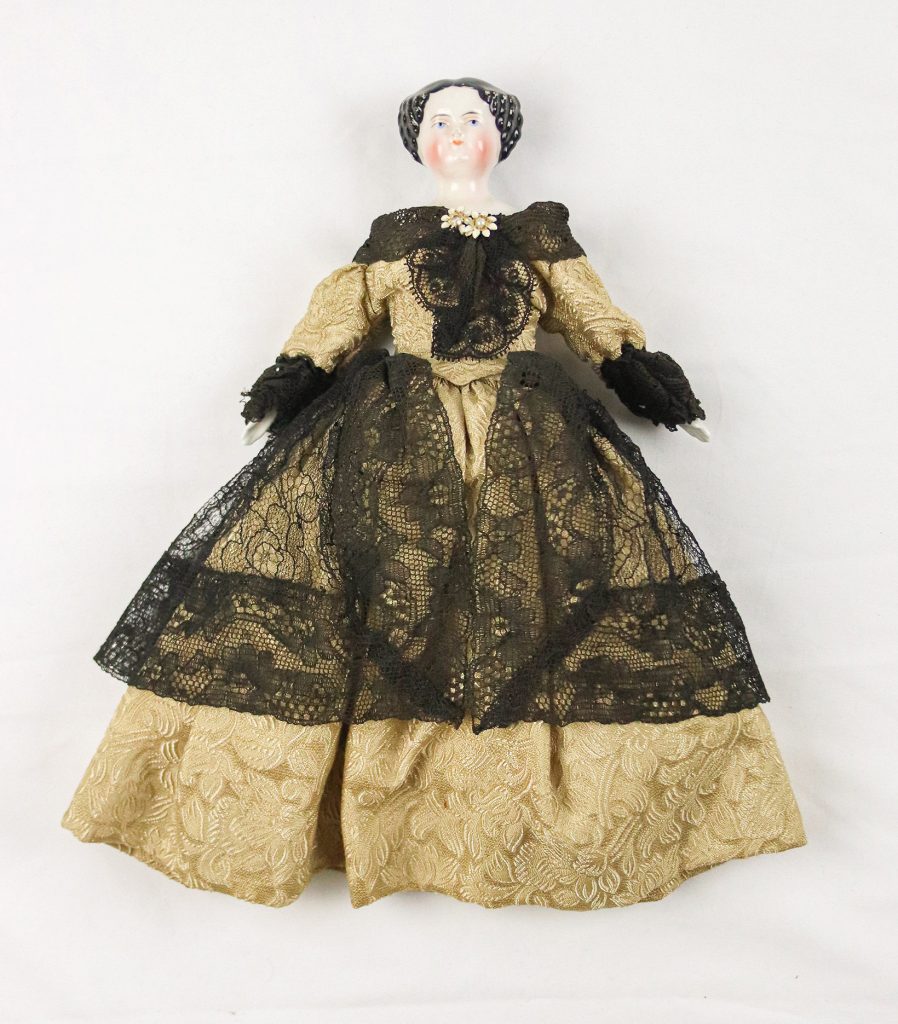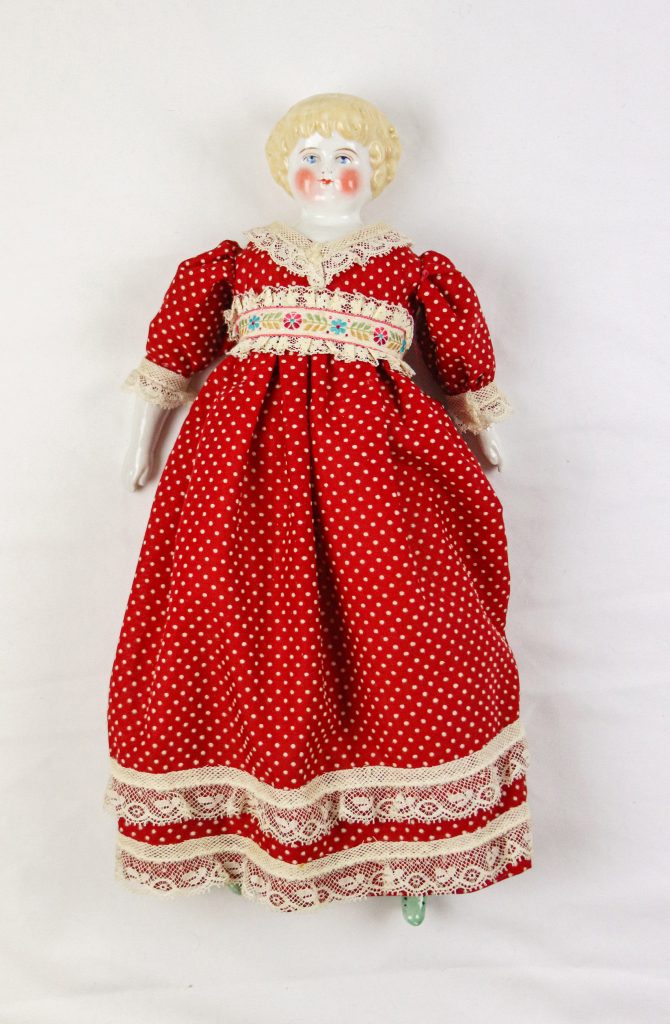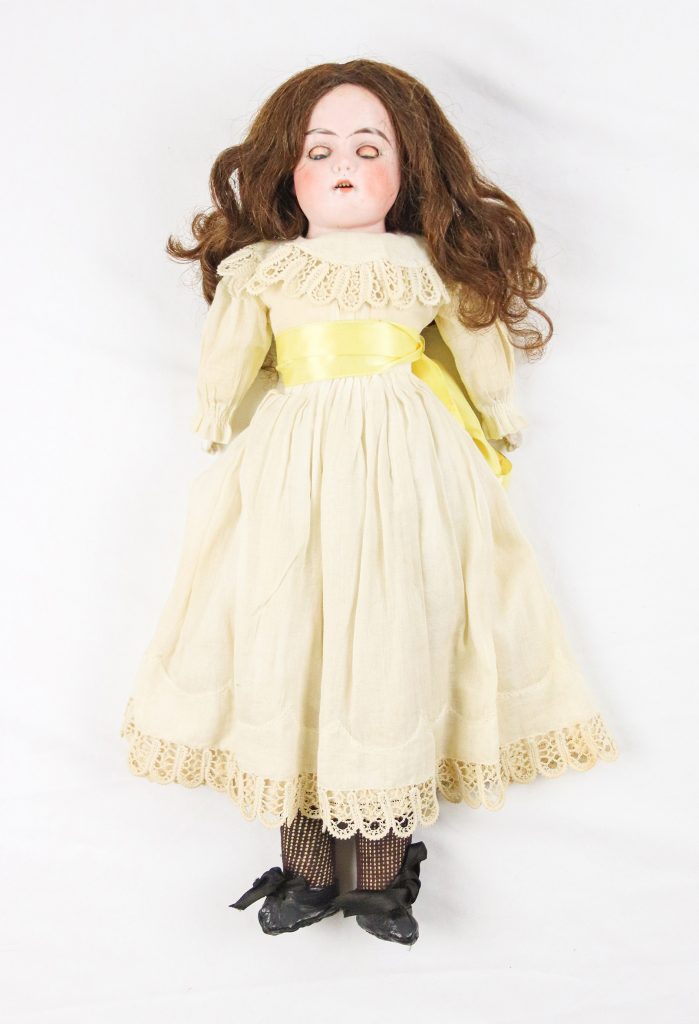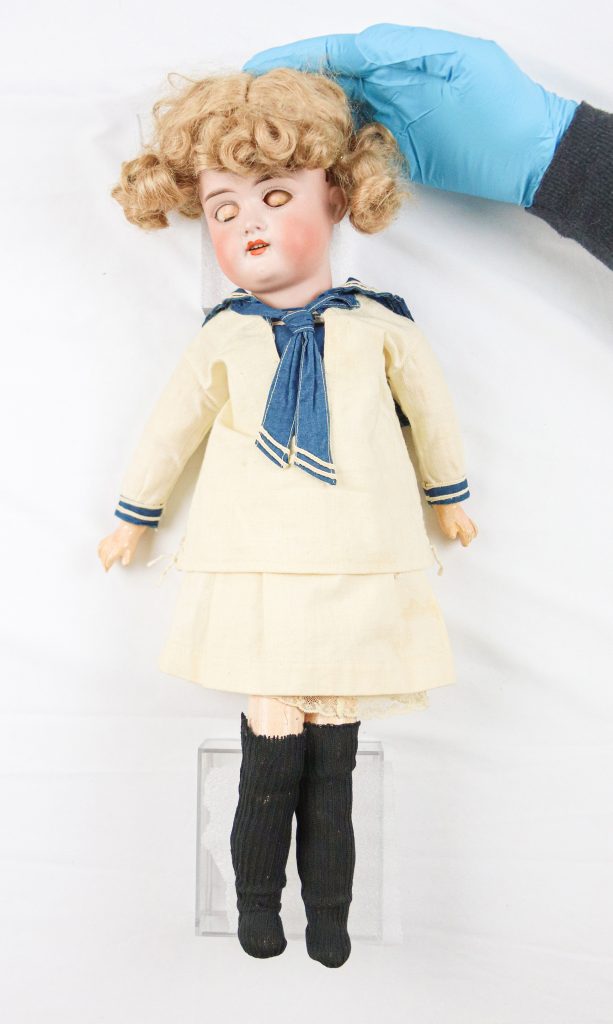Written by Meghan E. Gattignolo
Those glistening eyes, those rosy cheeks, the way the shadows fall just right to hide details of the face so that maybe – just maybe – you saw those eyes move. Perfectly painted porcelain faces have been creeping us out for a long time, but they weren’t always fuel for nightmares. When exactly did dolls become creepy? Is your grandmother’s heirloom Madame Alexander doll actually spying on you?

1860-1870
From the Museum’s Collections

Circa 1880’s
From the Museum’s Collections
Dolls have existed for millennia.
Even children living along the Nile River during the time of the pharaohs made rag dolls with papyrus and linen. Until the modern commercial era, all the way up to the 20th century, children most often made their own dolls with the resources at their tiny disposal. Corn husk dolls were common child-made toys on the frontier. When growing up on a family farm was the way of life for most Tennessee residents throughout the 19th century, husking corn was a chore often reserved for younger children. With very few toy options around, bored kids can turn just about anything into a plaything.
Kids don’t need a history lesson to make and play with dolls – the impulse is ingrained in them. Most experts agree that playing with dolls is an important social-emotional development tool. Girls, especially, see dolls as friends and playmates. They use dolls to act out life experiences they are having trouble processing or don’t understand yet. Dolls are a safe way for children to explore the world before they are thrust into it.

Circa 1910’s
From the Museum’s Collections

1910-1930
From the Museum’s Collections
When did dolls turn creepy?
Children like playing with dolls whether or not they have faces, any human-like figures are enough. But faces do help children bond with their dolls – and beg their parents for specific ones they see at the store. Babies developed the ability to recognize and track faces as an evolutionary survival tool, to help create bonds with their parents. Ever since, people have had the compulsion to look for faces.
Thalia Wheatley, a professor of Psychological and Brain Sciences at Dartmouth, has researched how the human brain influences people’s actions. As she points out in this video, human beings are social creatures who search for other minds with which to interact. People learn to pay attention to faces, because a face provides clues to the presence of another mind.
The images in this article are dolls from our Museum collection. You can see over time – especially during the turn of the previous century – how dolls have become more sophisticated in their representation. The average doll from the 1920s is much more compelling than a doll from the mid-19th century.

1930-1960
From the Museum’s Collections
Our suspicion of them has grown with their evolution. One of the earliest films featuring a creepy doll, The Great Gabbo, is from 1929. The doll, Otto, is a ventriloquist dummy who seems to have a mind of his own. Our hard-wired response to find other minds by looking for faces seems to have backfired on us. Maybe we’re right to feel uncomfortable in the presence of grandma’s dolls… maybe they are watching.
Happy Halloween!
References
There’s a Psychological Reason Dolls Are So Spooky (vice.com)
Playing With Dolls | Wellesley College
The History of Creepy Dolls | History| Smithsonian Magazine
A Short History of Creepy Dolls in Movies | Den of Geek

Meghan E. Gattignolo
Meghan E. Gattignolo is a freelance writer and longtime Clarksville, TN resident. She loves to obsess about historical subjects and annoy her family daily with unsolicited random facts. Meghan holds a History B.A. from Austin Peay State University and lives in town with her husband and two daughters.
Becky Wood, Technical Writer, edits each blog post. Maegan Collins, Marketing Communications Manager, prepares photographs and visual images as well as prepares the blog posts for the web.